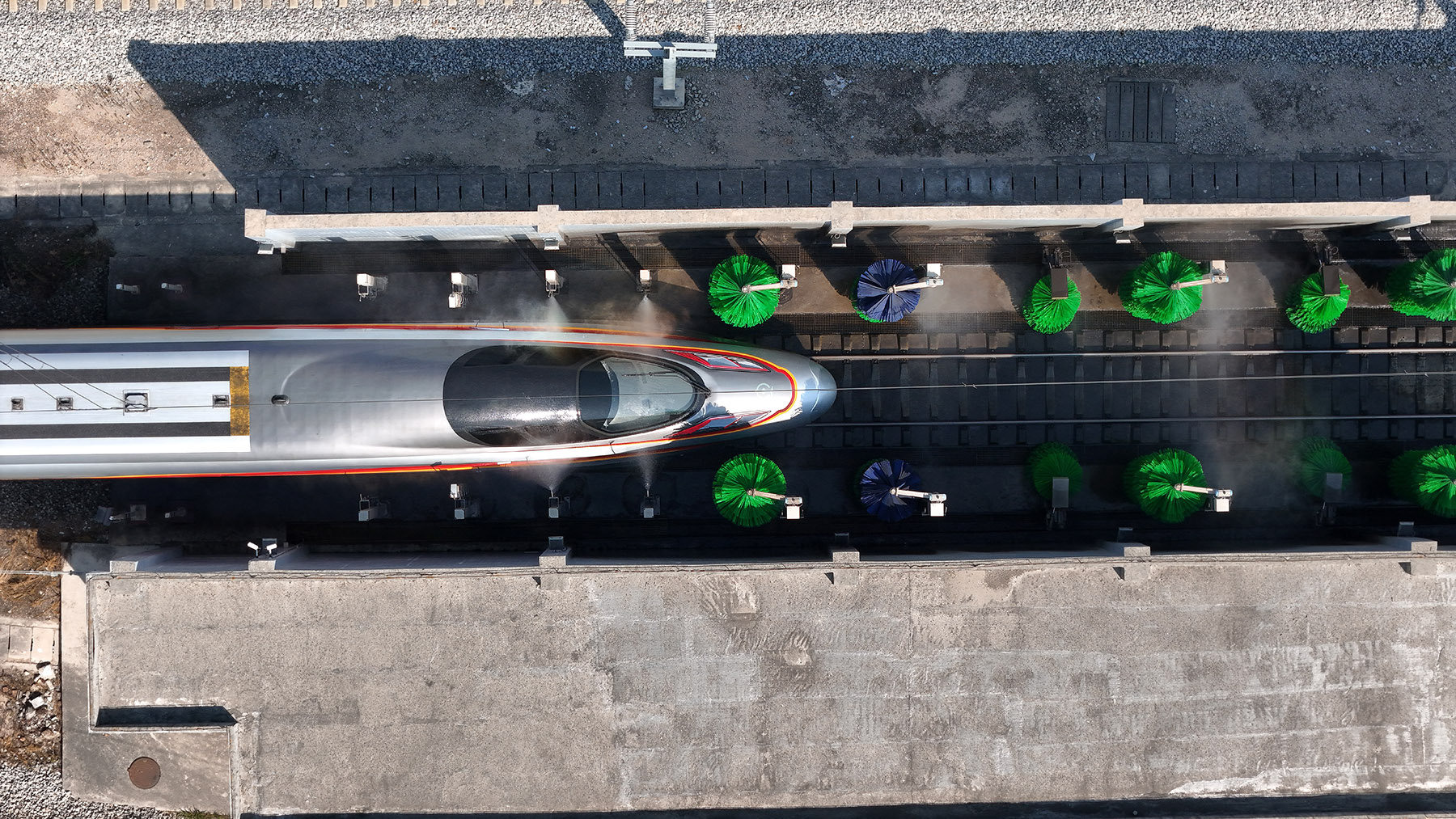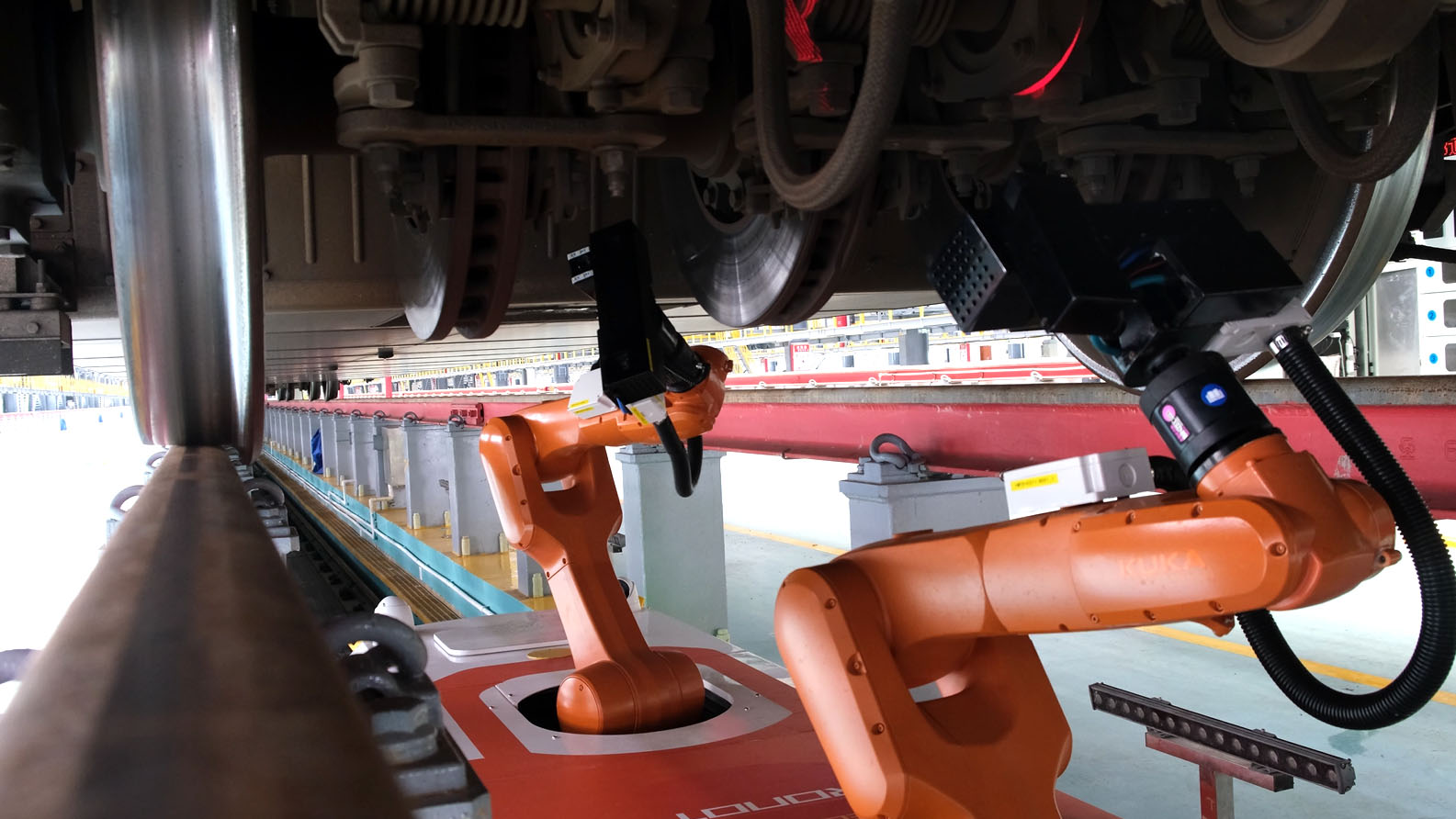
As Spring Festival approaches, Shenzhen has rolled out an additional 1,000 high-speed rail trains to accommodate a daily average of 360,000 passengers.
A maintenance base in Shenzhen adopts advanced technologies for continuous cleaning and maintenance to ensure seamless train operations.
READ MORE: Over 200m train tickets sold for 2025 Spring Festival travel rush
Inspection robots equipped with two six-joint mechanical arms and high-precision color 4K scanning cameras have replaced manual labor to examine train underbodies — wheels, axles, brakes, and other key components — that are crucial for safe operation.
An engineer surnamed Cai said that the robot can perform a standard inspection of an eight-carriage train by taking 1,096 quick scan photos in four minutes and 1,012 detailed photos in 34 minutes.
“Through spectral analysis, 3D measurements, and algorithm recognition, it can automatically detect more than 60 types of errors, including missing parts, loose bolts, disconnected pipe joints, and gearbox oil leaks,” he said.
“During this year’s Spring Festival travel rush, the number of trains for nighttime maintenance has been increased from 23 to 35. These robots have significantly boosted our inspection efficiency, saving one-third of manpower,” he added.
The robots are remotely controlled via an online system, allowing engineers to operate them and manage data using a computer or iPad.

When the trains are running on the tracks, the base monitors the safe operation of each carriage at all times. Based on a performance monitoring system, engineers can examine the real-time operational data of all trains, such as axle temperatures, traction transformers, and converters, ensuring maintenance personnel are prepared with data before the train returns to the maintenance depot at night.
ALSO READ: Intense cold spell expected Thursday through to Spring Festival
Besides maintenance, each train’s exterior surface is thoroughly cleaned every few days. A 16-carriage high-speed train can be cleaned in 10 minutes at the maintenance base’s train-wash facility, where giant spray nozzles and soft brushes are activated automatically upon detecting a passing train.
Local media reported that the Shenzhen maintenance base, currently with 14 tracks, will be doubled in size, as the city is building one of China’s largest high-speed train stations in Xili, Nanshan district.


